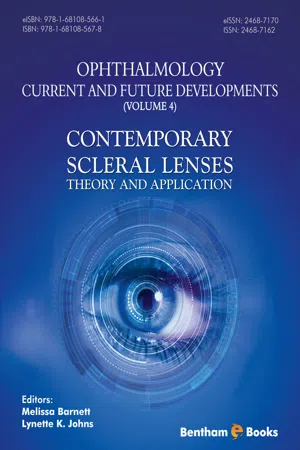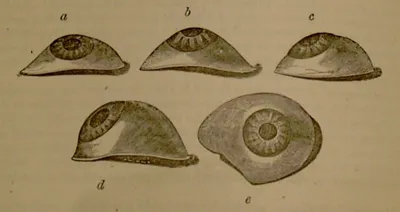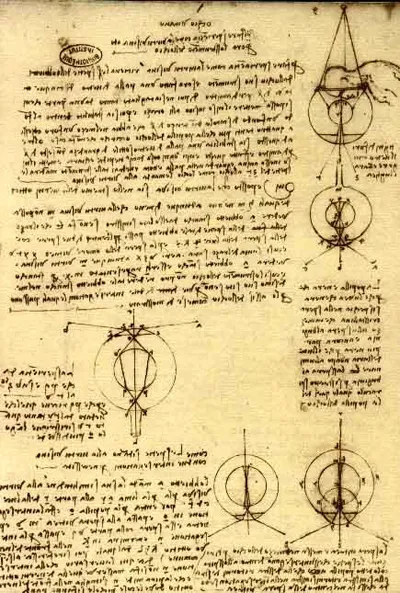History of Scleral Lenses
Timothy J. Bowden1, †, Melissa Barnett2, * 1 Bowden & Lowe, Kent, UK
2 University of California, Davis, Sacramento, CA, USA
Abstract
Scleral lenses have existed for centuries, longer than any other type of contact lens. They were first conceptualized by Leonardo DaVinci in the early 16th century and were first manufactured in Europe in the late 1800s. The first scleral lenses were blown glass scleral shells without power made in 1887 by Fredrich A. Müller and Albert C. Müller. The primary indication for these scleral lenses was to manage ocular surface disease. In 1889, Adolf Eugen Gaston Fick described the use of scleral lenses with optics added to correct vision. In 1889, Eugene Kalt described contact lenses as orthopedic appliances for the treatment of keratoconus. In that same year, August Müeller created a scleral lens for himself to correct his own 14D of high myopia. Modern advances of scleral lenses have overcome their previous shortcomings, including lens-induced corneal edema due to poor transmissibility of oxygen through the lens and poor reproducibility. Contemporary scleral lenses have re-emerged from a long history of contact lens successes and some failures. In recent years, there has been a burst of new designs and innovations worldwide. With modern materials, manufacturing, and advanced scanning equipment, scleral lenses are now very innovative and a million miles away from their early beginnings.
Keywords: Air bubble, Artificial eye, Blown glass contact lens, Cast, Clearance, Experiment, Fitting, Gas permeable, Glass, Glass mask, Impression, Keratoconus, Lens making, Material, Mold, Optician, PMMA, Refractive error, Scleral shell, Transitions.
* Corresponding author Melissa Barnett: University of California, Davis, Sacramento, CA, USA; Tel: 916-734- 4641; Fax: 916-565-1640; E-mail: [email protected]
† Deceased INTRODUCTION
A question that is often asked is: when and by whom were contact lenses invented? Well, contact lenses were not so much invented as evolved. There have been many stages in this development, some theoretical, but in the main much more practical. Today, contact lenses are largely used for cosmetic reasons, but they originally were designed to deal with medical problems including keratoconus and Symblepharon. Most of the early contact lenses were made by
artificial eye makers. Who can be better to make something to fit onto the front surface of an eye and under the eyelids than a person who would already have the skills required?
Why were the first contact lenses designed as scleral lenses? This was a result of them being made by artificial eye makers. The first contact lenses were supported by the sclera, and the optic portion vaulted over the cornea. They could as easily have been made as corneal lenses. In fact, this happened in Japan when Kyoichi Tanaka designed his first contact lens. He had never seen a contact lens before, so what he designed was actually a corneal lens. This was the start of what was to become Menicon. It has now turned full circle. With new materials and new measuring, fitting, and manufacturing techniques, many eye care practitioners are turning to scleral lenses for improved vision and comfort for their visually compromised patients.
Artificial eye making originated in Egypt around 2000 BC to ensure that Egyptians could see in the afterlife, and it gradually spread throughout Europe, first through Venice and later through Germany, the UK and then the US (Fig. 1). Artificial eye making was big business. Eye damage and eye loss were very common due to frequent, severe eye infections resulting from poor hygiene and no antibiotics, emerging industrial processes using lime and hot metals, and the non-availability of protective eyewear.
Fig. (1)) Images of artificial eyes.
“The Optician” of 28th July 1898 reported that 2,000,000 artificial eyes were produced in the German Empire each year, and a single French firm was producing 300,000 per year. “The Optician” of 1st June 1899 reported a horse being fitted with an artificial eye made of vulcanite: “There is nothing a lover of horses dislikes more than a disfigured animal”. It is no co-incidence that the earliest contact lenses from the Müller brothers of Wiesbaden, Germany, looked like artificial eyes, with the opaque scleral portion including representations of scleral and conjunctival blood vessels, but having a clear optic portion.
EARLY THEORISTS
It has previously been widely reported that the illustration in Leonardo da Vinci’s Codex D, folio 3, of 1508 depicting a man with his head in a bowl of water somehow showed the invention of a contact lens (Fig. 2). However, in the re-translation by Robert Heitz [1], this was not a prototype contact lens, but the beginning of understanding corneal neutralization. René Descartes, a French philosopher, mathematician, and scientist, described in his Discourse of La Dioptrique [2] in 1637 that a fluid-filled tube held against the eye enlarged the size of the retinal image. Philip de la Hire, a French mathematician, presented his dissertation in 1685 On the Neutralization of the Cornea [3]. He also speculated about whether the cause of myopia was either axial or refractive. Pierre Demours, a French physician, zoologist, and translator, and his father, a pharmacist, were the first to mention a conical cornea (keratoconus) in 1747 [4]. Pierre Demours also had a disagreement with Jean Descemet about a certain membrane in the cornea. Burchard Mauchart, 1748, John ‘Chevalier’ Taylor, 1766 [5], and Pickford [6], 1844, all made mention of keratoconus, but the first adequate description of keratoconus (Fig. 3) was published by John Nottingham in 1854 [7]. A slit lamp view of keratoconus is shown in Fig. (4).
Fig. (2)) The da Vinci Codex.
Fig. (3)) Keratoconus described by Nottingham.
Fig. (4)) Modern view of keratoconus.
In 1801, Thomas Young, an English physician and physicist, having studied medicine in London and Edinburgh and physics at Gottingen, identified the cause of astigmatism and published a three-color theory of perception. While a fellow at Cambridge University, he used a microscope lens with wax around the rim that was filled with water and held against the eye in an experiment on accommodation to neutralize the refractive effect of the cornea [8]. Inspired by Thomas Young, George Biddle Airy, British mathematician and astronomer, colluding and co-operating with John Herschel at Cambridge University, experimented with his own astigmatism. He described not only the optical theory of astigmatism, but also its correction with a theoretical back surface toric lens. He used the first few days of the moon’s crescent (similar to a stenopaic slit) to distinguish the astigmatic axis of hi...




